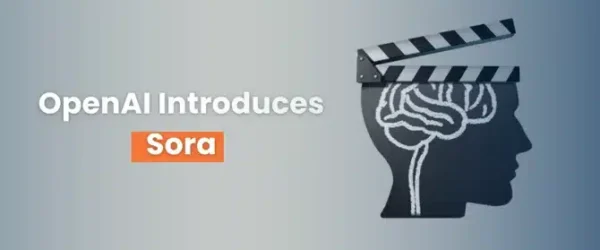Introduction to Web Accessibility in the Middle East
Web accessibility refers to the design and development of websites that are accessible and usable by people with disabilities. It seeks to ensure that individuals with visual, auditory, motor, or cognitive impairments can effectively navigate, perceive, interact with, and contribute to the web. In the Middle East, web accessibility is crucial for fostering inclusion, ensuring equal access to information, and empowering people with disabilities. This section provides an overview of web accessibility in the Middle East, highlighting its significance, the unique challenges encountered by people with disabilities, relevant legal frameworks, and the advantages of creating accessible websites.
- Understanding the Importance of Web Accessibility:
In many countries, web accessibility is not only a moral necessity but also a legal requirement. It promotes an inclusive digital environment where all individuals can completely participate in online activities, regardless of their abilities. In the Middle East, where diversity and inclusiveness are highly valued, web accessibility ensures that people with disabilities access information, services, employment opportunities, education, and social interactions.
- Overview of Disabilities and Accessibility Challenges in the Middle East:
The Middle East has various impairments, including visual, auditory, mobility, and cognitive impairments. Accessing and traversing websites can be difficult for individuals with disabilities due to inaccessible content, lack of alternative formats, non-intuitive navigation, and insufficient support for assistive technologies. Understanding these obstacles is crucial for developing effective web accessibility solutions that address the specific requirements of individuals in the Middle East.
- Legal Framework and Guidelines for Web Accessibility in the Middle East:
Multiple nations in the Middle East have enacted laws and regulations to ensure web accessibility in recognition of its significance. These laws seek to ensure that individuals with disabilities have equal access to digital information and services. Countries such as the United Arab Emirates (UAE) and Qatar have implemented accessibility standards and guidelines based on international best practices, such as the World Wide Web Consortium’s (W3C) Web Content Accessibility Guidelines (WCAG). Website owners and developers must be familiar with these legal frameworks and guidelines to meet accessibility requirements in the Middle East.
- Benefits of Creating an Accessible Website in the Middle East:
Creating an accessible website in the Middle East benefits owners, businesses, and society. By making your website accessible, you can:
- A website that is accessible ensures that individuals with disabilities can access and interact with your content, products, and services, thereby increasing your consumer base.
- Improve the user experience: A well-designed, accessible website provides all visitors with a seamless and pleasurable experience, fostering consumer satisfaction and loyalty.
- Demonstrate social responsibility: embracing web accessibility demonstrates a commitment to inclusivity and diversity, enhancing your brand’s reputation and nurturing a more diverse society.
- Adhering to web accessibility laws and guidelines ensures compliance and reduce the likelihood of legal issues or discrimination claims.
- Improve search engine visibility: Search engines, such as Google, increasingly prioritize accessible websites in their rankings, making web accessibility a crucial aspect of search engine optimization (SEO) and organic visibility.
Middle Eastern individuals with disabilities have equal access to online information and services due to the accessibility of the web, which is a fundamental principle. Recognizing the significance of web accessibility, understanding the unique challenges faced by individuals with disabilities, complying with legal frameworks, and embracing the benefits of creating accessible websites are essential steps towards fostering inclusivity and empowering individuals with disabilities in the Middle East digital landscape.
Critical Considerations for Creating an Accessible Website
It is essential to create an accessible website to provide equal access and a positive user experience to all users, including those with disabilities. You can ensure that your website is inclusive and reaches a larger audience in the Middle East by incorporating key web accessibility considerations. Let’s examine these factors in depth, accompanied by real-world examples.
- Designing for Visual Accessibility to Enhance User Experience
Designing with visual accessibility in mind helps individuals with visual impairments or color blindness to perceive and navigate your website effectively. Consider the following best practices:
- Implementing High Contrast and Color Usage: Use color combinations with sufficient contrast to ensure that text and other essential elements can be distinguished readily. For instance, using a dark font on a light background or vice versa. A news website in the Middle East employs high text-to-background contrast, making reading the articles more straightforward for those with visual impairments.
- Including Alternative Descriptive Text for Images and Icons: Provide alternative text (alt text) to convey the content of images and icons. Then, screen readers can read the alt text audibly, allowing visually impaired users to comprehend the context. A Middle Eastern e-commerce website includes descriptive alt text for product images, such as “Red leather handbag with gold accents,” so that visually impaired visitors can understand the product’s visual details.
- Utilizing Clear Typography and Appropriate Font Sizes: Select legible fonts and ensure the font size is appropriate for comfortable reading. Avoid tiny fonts that may cause eye distress. A travel blog in the Middle East employs a legible font with a proper font size to ensure readability, especially for visually impaired readers.
- Ensure Mobile Accessibility through Responsive Design Ensure a consistent user experience across desktops, tablets, and smartphones by optimizing your website for various screen sizes and devices. A website for a restaurant in the Middle East employs a responsive design, enabling users with disabilities to access information and make reservations on multiple devices readily.
- Ensuring Keyboard Navigation and Focus for Seamless Interaction
Keyboard accessibility is vital for individuals who rely on keyboard navigation instead of a mouse or other pointing devices. Here are essential considerations:
- Enabling Keyboard Accessibility and Providing Links to Skip Navigation: Permit users to navigate your website using only the keyboard. Ensure the keyboard can easily access and activate interactive links and icons. Include a “skip navigation” link at the top of the page to enable users to bypass repetitious navigation and go directly to the main content. A government website in the Middle East is fully accessible via the keyboard on all pages. It provides a “Skip to Content” link that lets users access the primary content immediately.
- Using Focus Indicators to Improve Navigation and Visibility: Ensure that interactive elements receive appropriate focus indicators, such as highlighted outlines or color changes, when selected. This assists users in understanding which feature is presently in view. The website of a Middle Eastern educational institution employs focus indicators that make it simpler for users with motor disabilities to navigate menus and interactive elements.
- Creating Accessible Form Controls and Error Handling: Ensure that form fields, checkboxes, radio buttons, and other input elements are keyboard accessible and labeled correctly. Provide descriptive error messages and correction suggestions for form input mistakes. The Middle East online banking website includes accessible form controls with distinct labels, concise error messages, and helpful instructions, ensuring that users of all abilities can efficiently complete transactions.
- Providing Alternative Content and Enhancing Multimedia Accessibility
Consider different ways to make multimedia content, such as images, audio, and video, accessible to individuals with disabilities:
- Providing Access to Audio and Video Content for People with Hearing Impairments: Include closed captions or transcripts for videos so that individuals who are deaf or hard of hearing can comprehend the audio content. A Middle Eastern website for cultural events provides videos with closed captioning in Arabic and English, allowing users with hearing impairments to engage with the content thoroughly.
- Incorporating Transcripts and Captions into Multimedia Elements: Transmit text transcripts for audio content like podcasts and audio presentations. This enables those with hearing impairments or who prefer reading to listening to access the information. A podcast platform in the Middle East provides complete transcripts for each episode, allowing those with hearing impairments to read the podcast content and follow along.
- Using Descriptive Alt Text with Images and Visual Content: Create alt text that accurately describes the content or context of an image. This allows screen reader users to comprehend the visual elements of the website. An online art gallery in the Middle East employs descriptive alt text for artwork images, providing visually impaired visitors with a vivid and detailed description of each piece.
- Creating Structured and Semantic HTML for Improved Accessibility
Developing a well-structured and semantic HTML website enhances accessibility and aids assistive technologies in adequately interpreting and presenting content. Consider the following practices:
- Establishing Proper Heading Structure and Document Outlines: Use heading tags (h1, h2, etc.) hierarchically to structure content logically. This helps screen readers and users to understand the organization of the page. Example: A news portal in the Middle East structures its articles hierarchically using heading tags, allowing screen readers to present the content in a well-organized manner.
- Using Meaningful Link Text and Facilitating Anchor Navigation: Ensure that link text accurately describes the destination or purpose of the link. Avoid using generic phrases such as “click here” or “read more.”Example: A tourism website for a specific city in the Middle East uses descriptive link text, such as “Explore historical landmarks of Jaddah,” providing users with a clear understanding of where the link leads.
- Employing Lists and Tables in a Structured and Accessible Manner: Use list tags (ul, ol) to present information in a list format and engage proper table markup for tabular data. This helps assistive technologies interpret and present the content accurately. Example: An educational website in the Middle East offers course schedules using well-structured tables, making it easier for visually impaired students to access and understand class information.
By incorporating these essential guidelines for designing an accessible website, you can ensure that your website’s content is inclusive, user-friendly, and accessible to people with disabilities in the Middle East. Remember that prioritizing accessibility improves the user experience and correlates with SEO best practices because it makes your website more discoverable and relevant to a larger audience.
Testing and Validating Web Accessibility
Testing and validating web accessibility is crucial in ensuring that your website complies with the required standards and provides an inclusive experience for users with disabilities. By conducting a comprehensive evaluation of the accessibility of your website, you can identify and address any barriers or issues that may prevent users with disabilities from accessing and navigating your content. This section describes various techniques and instruments for testing web accessibility, ensuring optimal performance and adherence to accessibility standards.
- Manual Testing Techniques to Ensure Accessibility Compliance:
Manual testing involves replicating users’ experiences with disabilities to assess your website’s accessibility. Consider the following strategies:
- Keyboard-Only Navigation and Screen Reader Testing: Navigate your website using only the keyboard to ensure that all interactive elements, including links, icons, and form controls, are accessible and functional. In addition, evaluate the accessibility of your website’s content for those with visual impairments by utilizing screen readers.
- Visual Inspection for Contrast and Color Issues: Inspect your website’s design and optical elements to ensure appropriate color contrast, text legibility, and a distinct visual hierarchy. Ensure that essential information is not communicated solely via color signals.
- Testing Form Interaction and Error Handling: Fill out and submit forms on your website to ensure that users with disabilities can quickly enter information, choose options, and receive meaningful error messages or correction suggestions.
- Leveraging Automated Accessibility Testing Tools for Efficiency:
Automated accessibility testing tools can facilitate the process of evaluating the accessibility of your website. These tools examine your website pages for common accessibility issues and generate reports detailing the problems identified. While automated tools can detect some accessibility issues, manual testing is still required for a thorough evaluation. Consider the subsequent:
- Exploring Accessibility Evaluation Tools for Streamlined Testing: Various accessibility evaluation tools are available that can aid in identifying potential accessibility issues in your website’s code, structure, and content. Frequently, these tools generate reports highlighting detected issues and offering enhancement suggestions.
- Highlighting Popular Web Development Accessibility Testing Tools: Numerous commercial and free accessibility testing tools are widely used by developers and accessibility professionals. WebAIM’s WAVE, Axe DevTools, and Lighthouse Accessibility Audits are prominent tools. Experiment with various tools to determine which fits your requirements and workflow best.
- Obtaining User Testing and Feedback to Refine Accessibility:
User testing and feedback are essential for validating your website’s accessibility. Participation of individuals with disabilities in the assessment process can yield insightful insights and perspectives. Consider the subsequent:
- Involvement of People with Disabilities in User Testing and Feedback Collection: Collaborate with individuals with various disabilities to ensure your website is navigable and interactive. Observe their experiences, hear their feedback, and make the necessary modifications to enhance accessibility based on their observations.
- Incorporating User Feedback to Continually Improve Accessibility Encourage users to provide feedback regarding accessibility barriers they encounter while using your website. Create a feedback mechanism, such as an accessibility-specific email address or feedback form, to collect and resolve their comments and concerns.
You can comprehensively evaluate and validate your website’s accessibility by combining manual testing techniques, automated accessibility testing tools, and user feedback. Regular testing and validation are essential for identifying and removing accessibility barriers, ensuring that individuals with disabilities have an inclusive web experience. Maintain awareness of evolving accessibility guidelines and best practices to enhance the accessibility of your website continuously.
Implementing Web Accessibility in the Middle East
Implementing web accessibility in the Middle East is an essential step toward creating an inclusive online environment that caters to the needs of individuals with disabilities. By integrating accessibility practices into the web development process, you can ensure that your website provides equal access and a positive user experience for all visitors. This section outlines key steps and considerations for implementing web accessibility in the Middle East.
- Raise Awareness and Foster a Culture of Accessibility:
Promoting awareness about web accessibility is the first step towards implementation. Educate stakeholders, web developers, content creators, and designers about the importance of accessibility and its benefits. Encourage a culture of accessibility by:
- Conducting Accessibility Training and Workshops: Organize training sessions and workshops to educate web development teams and content creators on the principles and techniques of web accessibility. Include specific information relevant to the Middle East, such as the local disability landscape and cultural considerations.
- Sharing Success Stories and Case Studies: Highlight successful examples of accessible websites in the Middle East to inspire and motivate others. Showcase how accessibility has positively impacted user experience and engagement.
- Adopt International Accessibility Standards and Guidelines:
Incorporating internationally recognized accessibility standards and guidelines ensures your website meets industry best practices. The Web Content Accessibility Guidelines (WCAG) developed by the World Wide Web Consortium (W3C) are widely accepted as the gold standard. Implement the following:
- Familiarize Yourself with WCAG: Study the WCAG guidelines and understand the principles, success criteria, and techniques specified in each level of accessibility (A, AA, and AAA). These guidelines provide a comprehensive framework for creating accessible web content.
- Align with WCAG Success Criteria: Implement WCAG success criteria relevant to your website, considering the needs and requirements of individuals with disabilities in the Middle East. Focus on keyboard accessibility, images’ alternative text, multimedia captioning, and explicit content structure.
- Engage Accessibility Experts and Consultants:
Seeking guidance from accessibility experts and consultants can significantly enhance your website’s accessibility implementation. These professionals can offer specialized knowledge and help ensure that your website meets the specific accessibility needs of the Middle East. Consider the following:
- Collaborate with Accessibility Organizations: Connect with local or regional accessibility organizations and consultants specializing in Middle Eastern accessibility requirements. They can provide insights, conduct accessibility audits, and offer guidance tailored to the region’s needs.
- Conduct External Accessibility Audits: Engage third-party accessibility auditors to evaluate your website’s accessibility compliance. These auditors can identify accessibility gaps, suggest improvements, and verify the implementation of accessibility best practices.
- Establish Accessibility Policies and Guidelines:
Developing internal accessibility policies and guidelines helps formalize your commitment to accessibility and ensures a consistent approach throughout your organization. Consider the following:
- Create an Accessibility Policy: Craft an accessibility policy statement that outlines your organization’s commitment to web accessibility, sets goals, and defines responsibilities for implementation and maintenance.
- Develop an Accessibility Style Guide: Create an accessibility style guide for creating accessible content, including best practices for text formatting, image descriptions, video captions, and other accessibility-specific considerations.
- Regularly Test and Monitor Accessibility:
Web accessibility is an ongoing process that requires continuous monitoring and improvement. Regularly test your website’s accessibility and monitor for any changes or updates that may impact accessibility. Consider the following:
- Conduct Periodic Accessibility Audits: Perform regular accessibility audits to assess your website’s compliance with accessibility standards and guidelines. Address any identified issues promptly and make necessary updates.
- Stay Updated with Accessibility Developments: Keep abreast of new accessibility techniques, technologies, and emerging standards. Stay informed about updates to WCAG and other relevant guidelines to ensure ongoing compliance and continuous improvement.
By following these steps and integrating accessibility into your web development process, you can effectively implement web accessibility in the Middle East. Embracing accessibility creates a more inclusive online environment, helps your website reach a broader audience, and aligns with legal requirements and industry best practices.
Conclusion
In conclusion, implementing web accessibility in the Middle East is crucial for creating an inclusive digital landscape that caters to individuals with disabilities. By adhering to international accessibility standards, raising awareness, engaging accessibility experts, and regularly testing and monitoring accessibility, you can ensure that your website provides equal access and a positive user experience for all visitors.
At Codbel Inc, we understand the importance of web accessibility and are committed to creating websites that prioritize inclusivity. Our team of skilled professionals is well-versed in the best practices and guidelines for web accessibility, including those specific to the Middle East. We can help you design and develop a website that meets the highest accessibility standards, ensuring that individuals with disabilities can access and engage with your content seamlessly.
By choosing Codbel Inc, you can expect a website that not only complies with accessibility requirements but also offers a user-friendly interface, optimized performance, and enhanced search engine visibility. We are dedicated to creating a digital presence that reflects your brand values and provides a positive experience for all users.
Contact us at Codbel Inc today. Let us help you build an accessible website that reaches a broader audience, demonstrates your commitment to inclusivity, and aligns with the evolving landscape of web accessibility in the Middle East.





